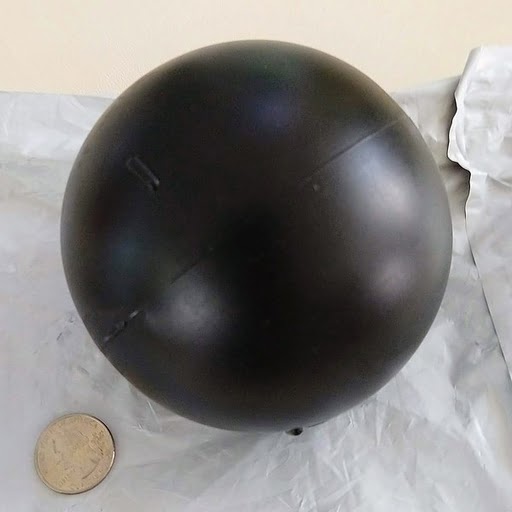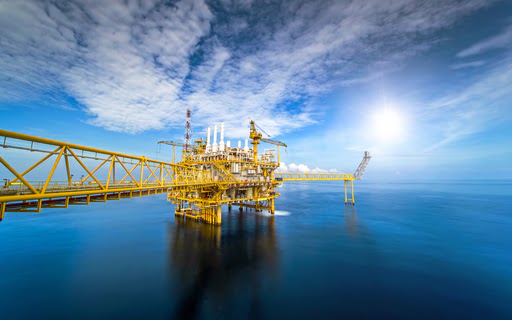The global water crisis has led to the development of unique solutions, one of which is the use of shade balls.
Every day, while browsing the internet, we stumble upon strange yet fascinating things. These discoveries provide us with valuable knowledge that can be applied in our daily lives. Recently, I came across one such piece of information that left me astonished—shade balls. In 2015, approximately 96 million of these small balls were placed in the Las Virgenes reservoir near Los Angeles, capturing the attention of environmental enthusiasts.
Initially, I assumed it was a one-time stunt for a world record or a scene in a movie. However, to my surprise, these plastic balls have become a permanent feature of the reservoir. So, what exactly are these spherical objects, and why have they been added to the water? Let’s delve into the details.
Understanding Shade Balls
Shade balls are essentially small plastic spheres filled with water. They are designed to float on the surface of water bodies, such as reservoirs and lakes. Originally referred to as “bird balls,” they were introduced to prevent birds from landing on ponds or lakes contaminated by industrial and mining activities. However, these plastic balls quickly found a variety of other applications, as we will explore below.
 A single shade ball (Photo Credit: Richard Thomas/Wikimedia Commons)
A single shade ball (Photo Credit: Richard Thomas/Wikimedia Commons)
These shade balls are made from high-density polyethylene, the same material used for milk bottles and packets. Each ball has a diameter of approximately 4 inches and weighs between 240 to 260 grams. Carbon black is added to protect the balls from the sun’s ultraviolet radiation, giving them a dark black color. Despite costing only 36 cents per ball, they are expected to save the Los Angeles Department of Water $250 million.
The Purpose of Shade Balls
Among their various environmental uses, the primary purpose of shade balls is to reduce water evaporation. While shade balls come in different colors, black is the most effective in minimizing evaporation. Additionally, they help prevent algae growth and minimize contamination from UV radiation byproducts.
Shade balls are also employed to mitigate bird aircraft strike hazards (BASH). Airports often have drainage ponds or retention basins, which are artificial lakes with vegetation and a permanent pool of water. These basins collect excess rainwater, preventing runway flooding and downstream erosion. However, these ponds attract birds and other flying creatures, posing a collision risk with aircraft. By covering the surface of these ponds, shade balls deter birds from hovering and endangering their lives, as well as the safety and integrity of airplanes.
What was the Purpose of Using Balls in Los Angeles?
Many people may assume that the reason for releasing these balls into the LA reservoir was to protect the water from the California sun and reduce evaporation. However, there is more to it than that.
 Shade balls being dumped in the LA reservoir
Shade balls being dumped in the LA reservoir
The reservoir is the main source of drinking water for the people of Los Angeles and the surrounding areas. However, the water that enters this reservoir contains bromide. Bromide (Br_) is a safe mineral commonly found in saltwater, and it is difficult to completely remove from water due to its small size. When this ion is exposed to sunlight, it undergoes a chemical reaction that produces bromate (BrO3—), which is carcinogenic and can cause cancer.
This reaction is catalyzed by chlorine, which is harmless to humans but necessary for disinfecting the water. The authorities found that removing sunlight was the easiest and most viable option to prevent this unwanted reaction. Hence, shade balls were introduced.
Do these Balls Actually Conserve Water?
A team of researchers from the Imperial College of London (Imperial College) and the Massachusetts Institute of Technology (MIT) recently published their findings on this subject. According to their research, the shade balls may actually use more water than they save. Over the course of two years, the balls saved 1.7 million cubic meters of water, while 2.9 million cubic meters were used in their production. Yes, you read that correctly! These balls require water for their production.
 Offshore oil mining requires a significant amount of water (Photo Credit: Red ivory/Shutterstock)
Offshore oil mining requires a significant amount of water (Photo Credit: Red ivory/Shutterstock)
The manufacture of high-density polyethylene, which is used to make the balls, requires oil and natural gas, both of which require a substantial amount of water for production. Based on various studies, it may take up to 3 years for the balls to save the same amount of water used in their production. This is not meant to discourage the use of shade balls, but rather to highlight that their effectiveness may vary in different locations. Additionally, it is important to note that shade balls have a limited lifespan and will need to be replaced, requiring a significant amount of water for production.
A Final Thought
Whether shade balls offer a long-term solution to the issues of water loss from evaporation and contamination can only be determined through further research and time. While their potential benefits are significant, the drawbacks cannot be ignored.
The use of this temporary solution raises important questions: Where are we headed with this? It seems that we are solving one problem in one place while creating several new problems elsewhere. When dumping these polymeric spheres into the water, did anyone consider the impact on the birds that rely on the reservoir for their water supply? Or did we simply assume that humans are the only ones entitled to claim it?
Protecting our Water Supply and Environment: Thinking Outside the Box
No matter what your standpoint is regarding the topic we have discussed, it is evident that action needs to be taken to safeguard our water supply and preserve our environment. This is why innovative concepts like the one presented here often attract attention!
